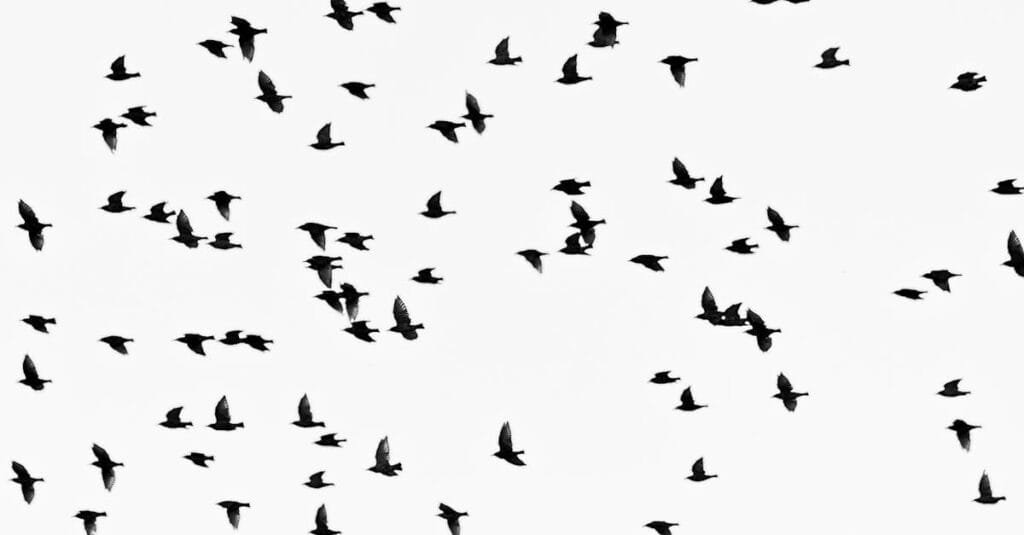Introduction
Avian influenza or bird flu is a disease caused by influenza A viruses that affect mostly birds. These viruses are classified into different subtypes based on two kinds of surface protein: Hemagglutinin (H) and Neuraminidase (N).
A Day In The Life Of A Poultry Farmer
The breaking of the dawn over the luscious fields of rice in Southeast Asia was accompanied by the soft clucking of chickens. Anwar, the devoted farmer of poultry, would step into the cool mist of the early morning, and his heart would throb every time he thought of his number of fowls–his pride.
For years they had been his wealth and joy but something felt strange that day, when he saw some birds were grouped together, fur all up, and dull-eyed. Panic shot up to his throat as he remembered hearing whispers about the H5N1 avian flu, rumored to have flooded near villages with that bird flu. Echoes of horror from the sickened flocks and farmers left in destitution reverberated in his skull.
He galloped all the way into the village clinic to get confirmation from the vet that he had dreaded. The heart of his village was now captured by the dreaded Avian Flu. He has given the sick birds immediate quarantine and begun to go and inform his neighbors about the virus and ways to prevent it.
By then, he became a community center of hope and knowledge by organizing the community meetings to educate the people about being watchful.
The last sun rays of the day fell over the land, saturating everything in a golden warmth as he felt a new sense of purpose with each step. He was not merely enduring but becoming more of a story in the community, a tale of resilience and “taking a stand against an invisible enemy”. That one moment said to him that together, they could do it; that no matter if the death knell of the H5N1 looming shadow started falling, after all, he might survive.
What is H5N1?
The H5N1 strain of avian influenza is significant for several reasons, particularly regarding its implications for public health.
Globally prevalent in wild birds, H5 bird flu is also producing epidemics in poultry and dairy cows in the United States, with multiple human cases reported recently. dairy and poultry workers.
Despite the low public health risk at this time, the CDC is closely monitoring the situation and collaborating with states to keep an eye on anyone who have been exposed to animals.
The CDC is keeping an eye out for human H5 avian flu activity using its flu monitoring tools.
Link for YouTube Video.
Here are some key points about H5N1:
- Classification:
Type: Influenza A virus
Subtype: H5N1, categorized by two proteins on its surface: hemagglutinin (H) and neuraminidase (N).
- Origin and History: Influenza A/H5N1 was first recorded in a small outbreak among poultry in Scotland in 1959, with numerous outbreaks subsequently in every continent
First identified in 1997 during an outbreak in Hong Kong, where it infected humans after transmission from birds. The virus is predominantly found in wild birds, especially waterfowl, but it can also infect domestic poultry and other species.
Understanding H5N1 is crucial for managing its impact on both animal and human health, as well as for preparing for potential future outbreaks.
Transmission
- Birds and Avian Influenza
Wild Birds: The highly pathogenic H5N1 strain is known to be present in almost all types of waterfowl and can often be carried with no visible signs of sickness, and it may be distributed with saliva, nasal secretions, or feces.
Backyard Birds: Transmission can spread quickly among roomed birds like chickens and ducks when the flock grows. Any of the birds can transmit the virus directly to another infected bird or through any contaminated environment.
2. Environmental Manifestation
The highly pathogenic H5N1 strain may endure a considerably long period in the environment, especially in wet conditions. In addition, contaminated feeds, water, or the surrounding environment represent potential sources of the disease that favor its spread through birds.
3. Transmission from Birds to Humans
Direct contact: The human infection typically comes from coming in direct contact with the infected birds, their feces, or infected environments. These can include handling sick or dead birds or working with poultry farming.
Human-Human Rare Transmission: Although primarily a bird virus, rare instances when there has been an infection, especially when there is significant proximity to an infected individual, there is limited human-to-human transmission.
4. Food borne transmission
Foodborne pathogens, which include bacteria, viruses, and parasites, can contaminate raw foods and their juices.
It is crucial to remember that there is no proof that eating fully cooked beef, game meat, poultry, organs, or eggs can spread the influenza A (H5N1) virus to people. According to all available data, the pathogen will be eliminated by complete boiling. Hand hygiene and safe food preparation and handling are always crucial. It is still safe to eat pasteurized milk and pasteurized milk products.
Symptoms in Humans
Several people in this country have recently been affected by the H5N1 avian influenza virus, which causes bird flu.
Bird flu has caused illnesses ranging in severity from mild to severe, including fatalities.
Human bird flu symptoms have been recorded in a variety of ways. Eye redness has been the predominant symptom among recent U.S. cases of avian influenza A(H5) virus infection. Besides, the presentation of respiratory symptoms and fever was also evidenced.
The threat remains that the infection with avian influenza virus could result in severe illness in humans, but that underscores the importance of continued prevention and surveillance measures.
Symptoms of mild humans avian flu:
Mild fever, cough, sore throat, runny nose or stuffy nose, headache, muscle aches, fatigue, and redness and swelling of the eyes (conjunctivitis)
Conjunctivitis is the most common condition caused by recent occurrences of infections of highly pathogenic avian influenza A(H5) viruses infecting humans in the U.S. Symptoms are frequently associated with redness in the eye.
Nausea, vomiting, or diarrhea is lesser seen.
Not every time is possible to find a fever.
Risk Factors
It is possible for H5N1 to persist for long periods of time. For up to ten days, birds with an H5N1 infection continue to expel the virus through their saliva and feces. Touching contaminated surfaces can spread the infection.
H5N1 avian influenza, which is more commonly known as bird flu, is one of the viruses that has potential risks not only to the birds but also to human health. Here are certain major risk factors associated with the virus:
1. Exposure to infected birds
Direct Contact: entails touching or being in contact with infected poultry or wild birds.
Contaminated Environment: Working in environments where birds are, such as poultry farms, and markets.
2. Occupational hazard
Workers who are associated with poultry: Workers are exposed to the virus daily through daily interaction with birds and their droppings.
Veterinary personnel and proper handlers with sick animals-Exposure is higher due to the fact that they handle the sick animal.
3. Geographical Area
Endemic Zones: Areas where the history of H5N1 outbreaks are maximum, especially in Asia, Africa, North America and quite many parts of Europe. These regions are also still on high alert due to the outbreaks that can occur and zoonotic potential of H5N1. Ongoing monitoring and biosecurity are required in order to not spread further.
4. Immune System
Immune Suppression: It’s been identified that these individuals are more likely to have more severe infection, subsequent terrible symptomatology, or death.
5. Traditional Practices
Traditional Dish Preparation Practices Involving Raw or Insufficiently Cooked Poultry: Traditional dishes in which the bird animal’s raw uncooked product is utilized.
6. Institutional Rotations
Routes of Movement of Birds
Wild bird migration: migratory routes of wild birds can also be one of those factors for the onset and spread of the disease.
7. Biosecurity Measures
Inadequate Biosecurity: Absence of proper protective measures on the farm and in markets can facilitate the spread of the virus.
8. Specie Specifics
Human-to-Human Transmission – This factor is uncommon but new mutations identified by the virus may improve transmission amongst humans.
9. Public Health Preparedness
Monitoring and response -Weak institutions of public health may delay the detection and response to new outbreaks.
It is made perfect to be preventive: restricting the safe poultry and appropriate biosecurity measures and public health intervention are determinants for effective control of this virus.
Prevention and Control
Health chiefs are monitoring this variant of avian influenza because recent outbreaks in the U.S. have demonstrated that it sickens and kills millions of birds, chickens, and cows.
The latest outbreak has infected dozens with the virus otherwise known as bird flu and H5N1. They occur chiefly among dairy farm workers and agrarians. One person has died as a result of it as of January 14, 2025.
Preventing and controlling H5N1 bird flu requires a multi-faceted approach, involving public health measures, biosecurity practices, and public awareness. Some of the most significant strategies are described here:
1. Surveillance and Monitoring
Wild and Domestic Bird Surveillance: Regularly taking and testing samples from poultry and wild birds to try and pick up cases of H5N1 early.
Human Surveillance: Surveillance of public health concerning the affected person, farm, or market.
2. Biosecurity Measures
Farm Biosecurity: Develop and adopt good hygiene and biosafety procedures on all farms to prevent the intrusion of the infection.
Control of Wild Birds: Avoid the contact of wild birds with domestic birds-the biggest risk is ducks.
3. Vaccination
Poultry Vaccination: Introduce vaccinations against H5N1 for domestic birds to decrease the risk of infection and spread within the population.
Vaccination of People: Development of human vaccines, particularly for people with high risks.
4. Public Awareness and Education
Public Education: Inform people in your community about H5N1 risk factors and what they can do to prevent the disease, especially those people who come into contact with birds.
Training and Educational Programs on Safe Ways of Handling and Cooking of chicken Products.
5. Culling Infected Birds
Depopulation: The solution would be the application of killing tactics after the identification of outbreaks to quickly clean out the causes of infections.
6. Personal Protection Equipment (PPE)
Proper Use of PPE: To provide the personal protective equipment including masks, gloves, and gowns in carrying out tasks closest to or with these birds.
7. Response Plans
Preparation for Crisis and Emergency: Quick plan in face of emergency for disease outbreak involving coordination between public health authorities and Veterinary Services.
8. Linkages in International Track
Global-survey-we are going to join efforts with tracking of avian influenza worldwide, represented by organizations- WHO, World Organization for Animal Health (OIE), and the United Nations Food and Agricultural Organization.
Essentially, a broad approach of vigilance, biosecurity, public education, and rapid response will be required to reduce the risk of H5N1 outbreaks and to protect health in animals and humans.
Continued in Part 2: Click Here.
To Read More Education Articles Click Here.

